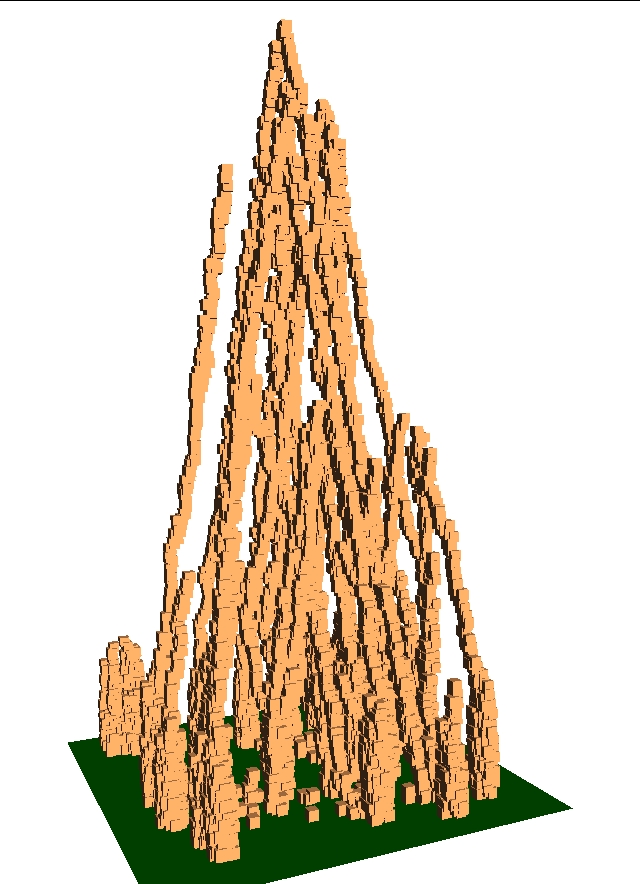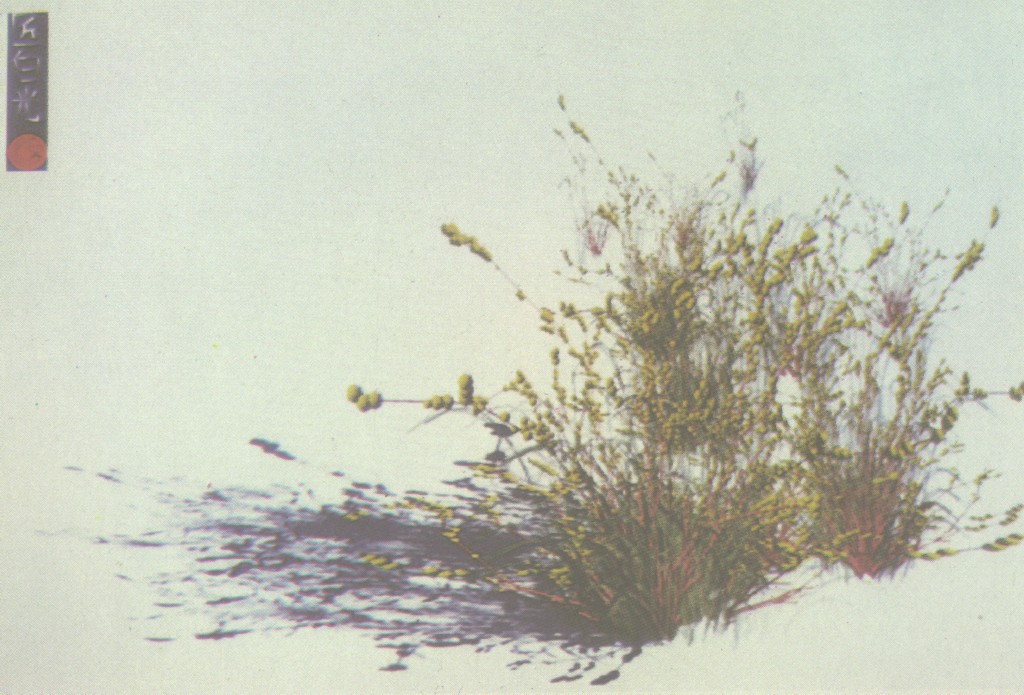
Think of a part program for a CNC machine tool:
N100 (DRIP1 10/25/99 10:03 AM)
N105 (OFFSETS SET USING G92)
N110 G49 G40 G91
N115 G28 Z0
N120 G28 Y0 X0
N125 G90 G17
N130 G92 X-30.0
N135 G92 Y220.0
N140 G92 Z170.0
N145 (ENSURE THAT OFFSETS ARE CORRECT)
N150 M00
N155 G00 X50.0 Y50.0 T1 M06
N160 (3/8 slotting cutter 64.350 DIA END MILL)
N165 M03 S100 F50.0
N170 G43 H1 Z2.0 M08
N175 Z0.0
N180 G01 Z-5.0 F25.0
N185 Y-50.0 F50.0
N190 X-50.0
N195 Y50.0
N200 X50.0
N205 G00 Z2.0
N210 M09
N215 G00 G91 G28 Z0
N220 G28 X0 Y0
N225 G49 G90
N230 M30
This, together with the blank from which the part is machined and
the fixtures and tooling, defines the part. It completely and unambiguously
decides its geometry. This was one of our original requirements for
a geometric model.
Suppose we didn't design things by starting with what shape they should be, but instead wrote down a set of rules for their manufacture. The rules would be the design.
This is a procedural model - a model that is defined by the procedure for making it.
The step from an engineering drawing to a geometric model doesn't seem that radical - one is swapping a two-dimensional medium for a three-dimensional one. But throwing away the model altogether and replacing it with a procedure is radical, and, as far as I am aware, no current engineering systems do this.
But this is the method used by the most highly efficient production system we know - life.
Organisms grow according to the rules stored in their DNA for making proteins. These interact with their surroundings and make structures. This is the most complicated process on earth, and the result is you, or a rat, or a geranium.
The study of the development of shape from DNA rules is called embryology, and it is spectacularly difficult. However, great strides have been made in recent years, quite a few of them at Bath.
On source of difficulty is that everything involved is so small - cells are typically about five microns across (though some are bigger - think of an ostrich egg...). But there is another life process that builds shapes at a more accessible scale. That is the nest-building behaviour of the social insects.

Termite nests are the largest and most complicated built structures in nature - some can reach 105 times the size if the individuals that build them. This ratio is only exceeded by the largest human cities like London and Los Angeles.
But the termites that build them do so by smell and touch (they are blind), and by following very simple rules. Here is an example derived from their methods:
1.Is there a pile of building material of height at
least h1 within a range d1?
Yes: Go
and make it higher.
No: Start
making your own pile.
2.When your pile has reached height h2 look
for a pile or arch within a distance d2.
Found:
Build a bridge to it, then go to Step 3.
Not found:
Go to Step 3.
3.Walk somewhere else at random, then go to Step 1.
The resulting structure will depend on the values of h1d1 h2 and d2 , of course, but the right values will generate self-supporting structures of considerable complexity. I have written a C++ simulation program for investigating such building behaviour. Here's one result:

The four values were deliberately chosen to give a soaring vaulted-arch construction a bit like Gothic architecture.
Now. This is nothing like an engineering component (though it might arguably form the basis of a building). In particular, though the general form is predictable in advance, the actual shape emerges as a result of applying the rules for its construction, and every one is different.
Here is another example of a research project attempting to do something similar, but now back down at the cell scale.
The first example of (almost) geometric modelling using this sort of idea was called particle models, and it was used for computer graphics, not engineering.

This still from the second Star Trek film (1982) shows the first mainstream use of the idea, which is simple: you have a large collection of particles in space which come into being, move, and extinguish according to (quite simple) rules that involve a random component. You then shoot the tracks they make onto film. [Note the motion blur on the stars in the background.]
Here is another example of what can be done:

This is a famous piece of computer graphics from about the same period called White Sand by Alvey Ray Smith of Lucasfilm.
There is no reason why we shouldn't specify the form of engineering components by a set of rules, and there are arguments in favour of the idea:
1. It should simplify production.And some against:
2. The rules for repair become the same as the rules for manufacture.
3. It ought to be easy to automate.
4. It is usually a more compact representation.
5. The computer can always make pictures for us if need be.
1. No two components will be the same.Though in the context of item 2, it's perhaps worth noting that the lens in your eye - which, like every other part of your body, is specified by rules not geometry - is accurate to within the wavelength of light; you'd have to work hard to machine something that well...
2. Making to precise measurements and tolerances may be difficult.
Finally, consider this: The 20th Century was the century of electronics; the 21st Century will be the century of biology. An engineering with a rule-based system of design is well-placed to use biological systems for production.
© Adrian Bowyer 2000